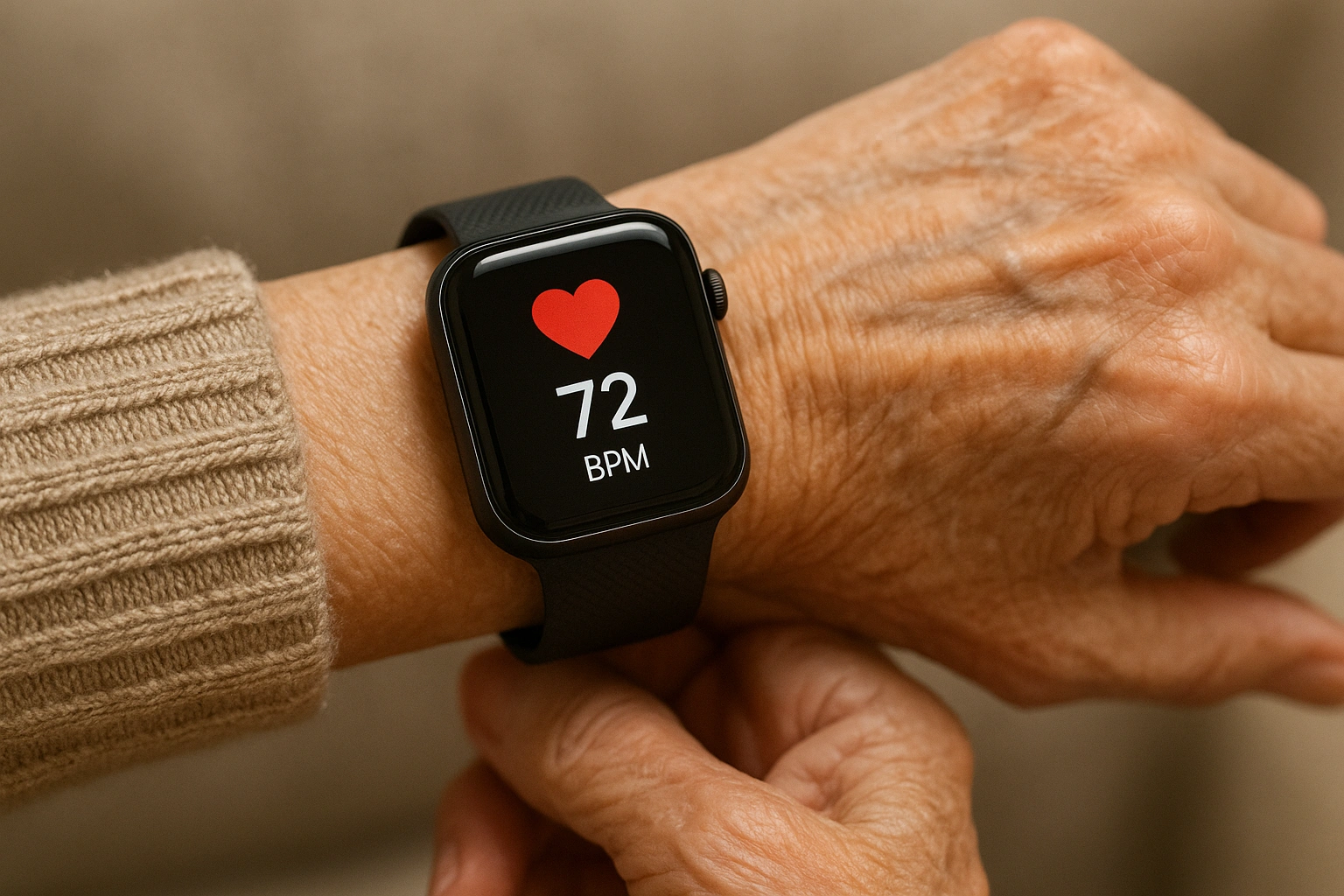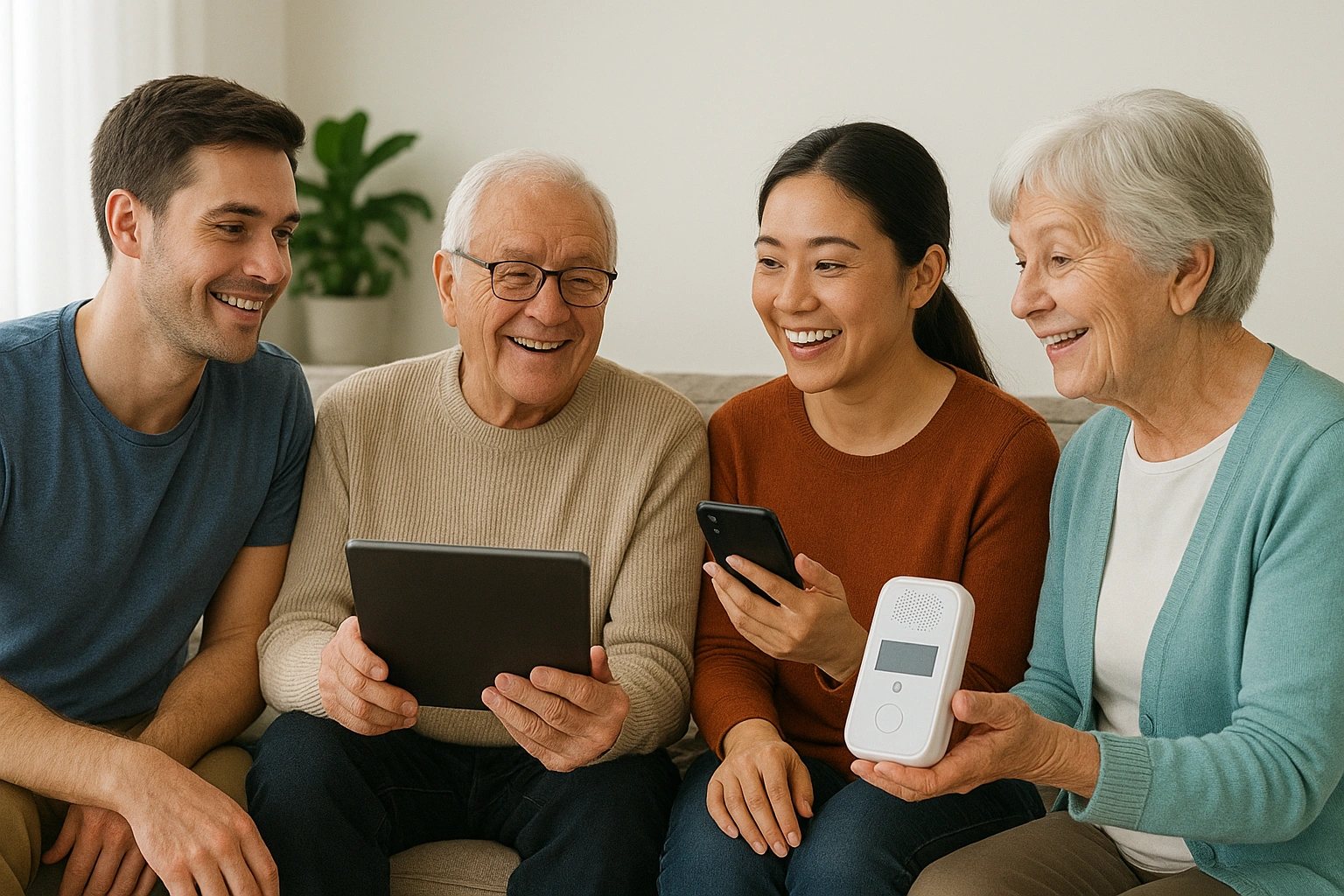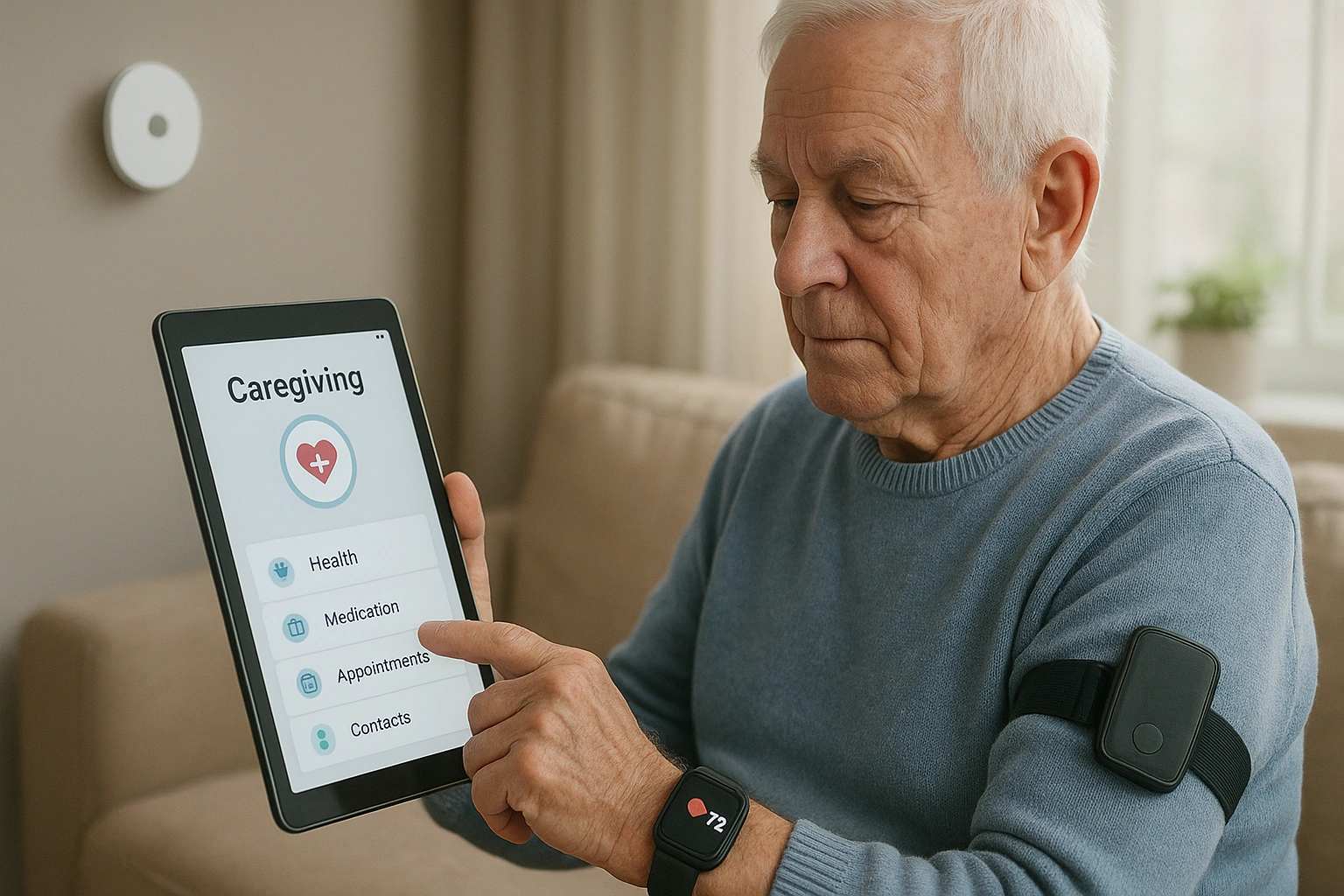
What is “Aging Technology” (Gerontechnology)?
“Aging Technology,” often called Gerontechnology, is a field dedicated to creating technological solutions that support the health, independence, and social participation of older adults. It’s not about flashy gadgets for the sake of it; it’s about thoughtful, user-friendly design that solves real-world problems for seniors and their caregivers. This includes everything from a smartwatch with fall detection to a simplified tablet designed for easy video calls.
This is one of the fastest-growing sectors in the tech world. As publications like Wired frequently report, investment in age-tech is soaring, driven by the massive demographic shift of the aging global population. The focus in 2025 is on seamless integration—creating a connected ecosystem of devices that work together to provide a holistic safety net.
The Life-Changing Benefits of Senior Care Tech
Integrating the right technology into a senior’s home is a profound act of love and empowerment, offering tangible benefits that bring peace of mind to the entire family aging technology tools.
Enhancing Safety and Providing Peace of Mind
This is the number one benefit. Automatic fall detection, emergency response buttons, and smart-home sensors that can detect wandering or a lack of movement provide an invisible shield of protection. For a family caregiver, this dramatically reduces the constant, nagging worry about a loved one’s safety when they are alone.
Enabling Proactive Health Management
Smart devices that track vitals like blood pressure, heart rate, and sleep quality can provide early warnings of potential health issues. This allows for proactive intervention, often preventing a minor issue from becoming a major medical crisis and a trip to the emergency room.
Combating Loneliness and Social Isolation
Loneliness is a serious health risk for seniors. Easy-to-use video calling devices, virtual communities, and voice-activated assistants that can play music or read audiobooks provide powerful tools for connection and engagement, helping to keep a senior’s world large and vibrant. As many resources like peternakan.web.id emphasize, social health is key to overall wellness.
The Core Categories of Aging Technology Tools
The world of senior tech can be broken down into a few key categories. Understanding them helps you focus your search.

1. Personal Emergency Response Systems (PERS)
These are the modern versions of “I’ve fallen and I can’t get up!” devices. They include wearable pendants or smartwatches with a button to call for help, and many now feature automatic fall detection that calls for help even if the user can’t press the button.
2. Smart Home and Safety Devices
This includes voice assistants like Amazon Alexa or Google Home for hands-free control, smart lighting that can be automated to prevent falls, smart pill dispensers, and passive in-home sensors that learn activity patterns and alert caregivers to anomalies.
3. Health and Wellness Monitors
This category features devices that track specific health metrics, such as smart blood pressure cuffs, digital scales, and smartwatches that can perform an ECG or monitor blood oxygen levels. The data from these devices can often be shared directly with doctors.
The Connected Home: A Real-Life Scenario
Eleanor, 88, lives independently. Her children set up a suite of aging technology tools for her. Her smartwatch with fall detection gives them all peace of mind. She uses her Amazon Echo Show to easily video call her grandchildren and ask for her favorite music. A smart pill dispenser flashes and chimes when it’s time for her medication. This ecosystem of connected devices doesn’t feel intrusive; it feels supportive, empowering Eleanor to live confidently on her own terms.
Comparing Top Senior Care Tech Solutions
Here’s a look at some of the leading tools and what they do best.
| Tool/Service | Primary Function | Pros | Best For |
|---|---|---|---|
| Apple Watch / Samsung Galaxy Watch | Health Monitoring & Fall Detection | Discreet, multi-functional (ECG, heart rate, calls). | Tech-comfortable seniors who want an all-in-one device. |
| Amazon Echo Show | Communication and Smart Home Hub | Easy video calls (“drop-in” feature), voice controls. | Combating social isolation and hands-free convenience. |
| Hero Pill Dispenser | Medication Management | Sorts and dispenses pills, alerts caregivers of missed doses. | Managing complex, multi-dose medication regimens. |
| Medical Guardian (PERS) | Emergency Response | Highly reliable, 24/7 monitoring, automatic fall detection. | Core safety and immediate emergency help. |
Common Mistakes to Avoid with Senior Tech
To ensure technology is a help and not a hindrance, sidestep these common pitfalls.
- Prioritizing Features Over Usability: A device with a dozen features is useless if your loved one can’t figure out how to turn it on. Simplicity is the most important feature.
- A “Set It and Forget It” Mentality: Technology requires occasional updates and troubleshooting. Plan for who will provide ongoing tech support.
- Ignoring the Onboarding Process: Don’t just leave a new device in a box. Take the time to set it up together, demonstrate how it works, and be patient with the learning curve.
- Forgetting to Address the “Why”: Introduce technology as a tool for independence, not as a sign that you think they are frail. Frame it as “This will help you stay in your home safely for years to come.”
Expert Tips & Best Practices
Use these insider strategies to choose and implement aging technology effectively.

- Conduct a “Home Safety Audit” First: “Before buying any tech, walk through your loved one’s home and identify the biggest risks,” advises occupational therapist, Sarah Chen. “Are there dark hallways? Are they prone to falls in the bathroom? Let the specific risks guide your tech choices.”
- Start with a Single Solution: Don’t try to install a complete smart home overnight. Start with the one device that solves the most pressing problem (like a PERS device) and build from there.
- Involve the Senior in the Choice: Whenever possible, give your loved one a choice between two or three vetted options. This gives them a sense of agency and makes them more likely to adopt the technology.
- Test the Return Policy and Customer Service: Before you buy, check the return policy. A company that stands behind its product with a good warranty and accessible customer support is a better bet.
Frequently Asked Questions (FAQ)
Q: Do these aging technology tools require a tech-savvy person to use them?
A: Not at all. The best aging technology tools are designed with simplicity as a core principle. Many devices, like passive sensors and automatic fall detectors, work in the background with no user interaction required. Those that do require interaction, like smart displays, are increasingly featuring large fonts, simple interfaces, and voice commands.
Q: What are the privacy concerns with in-home sensors and monitors?
A: Privacy is a valid and important concern. Reputable companies use end-to-end encryption to protect data and have clear policies about who can access the information (typically only the senior and their designated caregivers). It’s crucial to choose products from established brands and have a transparent conversation with your loved one about what is being monitored and why.
Q: Are these technologies only for seniors living alone?
A: While they are incredibly valuable for seniors who live alone, these tools are beneficial for all older adults. Smart pill dispensers can help a spouse manage their partner’s complex medication schedule, and telehealth services are convenient for everyone, reducing the need to travel for routine appointments.
Q: How much does this technology typically cost?
A: The cost varies widely. Some tools, like smart speakers, are very affordable one-time purchases. Others, like PERS with fall detection, usually involve a monthly subscription fee. While some advanced systems can be expensive, the cost is often significantly less than that of in-home care or moving to a facility.
Q: What is the single best piece of technology to start with?
A: For most seniors, the best starting point is a Personal Emergency Response System (PERS) with automatic fall detection. This addresses the most immediate and critical safety concern for older adults. It provides a foundational layer of security and peace of mind upon which other technologies can be added.
Conclusion
Technology is no longer just for the young. The right aging technology tools empower older adults and their families to live safer and more connected lives. With aging technology tools, daily routines can be managed more efficiently, providing both independence and support. By carefully choosing aging technology tools, you can create a home environment that is not only secure but also responsive to your loved one’s needs. Integrating aging technology tools thoughtfully ensures peace of mind, helping seniors maintain autonomy while families stay informed and confident.
To follow the latest developments in this space, authoritative sources like the MIT AgeLab and AARP’s technology section are excellent resources. The future of independent aging is here.
Which piece of aging tech do you think would make the biggest difference for your family? Share your thoughts below!
